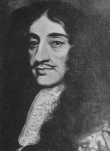Residents called it Roanoke. Virginians called it Rogues’ Harbor. And one particular governor claimed it was a land populated by nothing more than “a very mutinous people.” All of these names and claims have merit, and each sums up a different aspect of its history. It was the first permanent colony to exist in the Carolinas, and was the most egalitarian and rebellious society in all the English world at the time. A society of escaped slaves and runaway indentured servants, of pirates, and debtors, of religious dissidents, and those politically charged with the spirit of Cromwell’s revolution. These were a people who would bow to no man, recognize no political authority above the ones that they freely elected for themselves, and threaten imprisonment or death to anyone who dared try to collect a tax for the crown – all of this, more than a century before the so-called new and radical ideas of the American Revolution. This place was Albemarle.

It is no coincidence that such a colony would come to exist in between our country’s two largest estuaries. To the north was the Chesapeake Bay and the Virginia colony, with its rigid hierarchy, giant plantations, and slave markets; a society of great wealth and great poverty. To the south was Carolina, with its distinct lack of everything Virginia had to offer, and the Albemarle – Pamlico estuary with its untold possibilities, and treacherous shoal waters. What lay between these two great inland seas was a half-drowned peninsula, laced by black water rivers and creeks, hemmed in by the Currituck Sound and Atlantic Ocean to the east and the Chowan River to the west. And at its heart, a great and dismal swamp that engulfed some 2,200 square miles that stood between these two vastly different worlds.
Supporter Spotlight
The Great Dismal Swamp of the 17th and early 18th century was still a howling wilderness in the minds of most Virginians. A place of darkness. Where alligators hunted, and panthers haunted. Black bears and red wolves roamed this semi-aquatic forest. Cottonmouths held up on cypress knees, and timber rattlesnakes laid claim to those few hammocks of high ground that could be found.
And then there was the malaria. Of course, back then no one had drawn the connection between this disease and its mosquito vectors. Instead, it was believed that this sickness came from breathing in the miasma of the swamps themselves – hence the name malaria, mala aria. Italian for “bad air.” The dreaded “fever and agues” that was associated with this illness, turned the region into a hospital from August until October. A fact that only reinforced a notion that this was no place for the likes of civilized man. The Dismal was just that, a dismal place of sickness and death to be feared and avoided.
But, if you were a slave who had escaped your shackles on a Virginian plantation, or an indentured servant who watched as the courts steadily added years upon years to your sentence of servitude, then the Dismal Swamp offered more than malaria and soggy feet. It offered freedom.
Freedom is one of those words that seems to hold different meanings for different people. Freedom for a slave was something different than freedom for an indentured servant for instance. Such definitions were themselves altogether different from the meaning of freedom for a follower of Quaker beliefs escaping persecution and even execution in the Massachusetts colony.
Then there are the political ideologues. The sons of the English Revolution. Those Levelers and Diggers who dared to believe that all men had been created equal, that social classes needed banishment, and the only government that ruled should be a government freely elected by the people it governed. Freedom to these men was, again, something different.
Supporter Spotlight

Regardless of each refugee’s personal brand of what freedom meant to them, what they shared in common was a need to escape the structure of the English system. What they shared in common was a want of refuge beyond the tentacles of law and culture, where class and titles had no meaning. These were a people seeking safe harbor outside the folds of the Anglican church, and out of reach from a society that had institutionalized torture and mutilation as the foundation of its economy. What they shared in common, was Albemarle.
Before King Charles II handed over ownership of the Carolina colony to eight Lord Proprietors, for their loyalty to the crown during the English Civil War, scores of settlers had already begun to colonize what would soon be known as the Albemarle settlement. Establishing close relations with native tribes such as the Yeopim, Poteskeet, and Chowan, these families pressed beyond the Dismal Swamp to forge a world for themselves, free from crown, church, and Virginia to the north.
As so many had come to the Carolina sounds under dubious circumstances, flying under the radar became something of a survival strategy. The first generation of these families established no plantations, farmed only small subsistence plots of land, lived in the flood plains of the sounds, and built only clapboard shacks that were regularly washed away during hurricanes and then rebuilt. As something of a hat tip toward the known history of the region, these people called their new home Roanoke out of respect for the colony England somehow misplaced on an island inside the nearest outlet to the Ocean.

When in 1664 the charter for Carolina was drafted, these people found themselves at a crossroad in history. On the one hand, the establishment of Carolina meant that they were now free from the legal reach of Virginia. On the other, they found themselves once again subjects of the king. This world was already a functioning society. These families had no need of the good graces of the Lord’s Proprietors for their survival as other colonies had. And for that reason, they could choose to capitulate under whatever Colonial structure the proprietors saw fit, or they could stand their ground, demand their right to exist by their own set of laws, and to play by their own set of rules as part of the agreement for them accepting the terms of this new charter.
Harbored by the safety of the vast and shallow water estuary, and the treacherous shoals and inlets of the Outer Banks, these colonists found themselves in a unique position to make such demands. No ship in the royal fleet could reach them to try and coerce by threat of canons (think: Siege of Boston in 1775). A 2,200-acre swamp offered a barrier to approach from Virginia as well. And besides, given the nature of the swamplands in which these people existed, there was little hope for this region to turn much of a profit for the proprietors. The proprietors’ real interest lay with the newly established Charles Town on the southern end of the colony, which was beginning to look like a new Barbados. For Albemarle, geography beget security.
So, in 1677 when a declaration came from the banks of the Currituck Sound claiming “Wee will have noe Lords noe Landgraves noe Cassiques we renounce them all,” the citizens of Albemarle were making a stand against forms of government they did not believe in and the social norms they had fought their way into the southern frontier to escape. Such a statement could get your neck stretched elsewhere. But this was Carolina, and for the Lords Proprietors it was one they felt forced to accept.
Truth be told, the Lords Proprietors didn’t really have much of a choice in the matter. It wasn’t so much that they were being backed into a corner though. It was the fact that in short order, Charles Town, which was established in 1670, had begun to pay hefty dividends, making Carolina a highly profitable venture for the proprietors. If news of a rebellion in Albemarle ever reached the king, these lords risked losing control over the colony and its profits.
And so, this circle of lords who theoretically saw over the fates of the Carolina colony diligently worked to suppress and destroy any possibility of the king learning of the political situation while at the same time seeking to appease those residents of Albemarle. As long as they were getting what they wanted, they weren’t really rebelling, right?
Furthermore, given the treacherous nature of the coastline, this region of Carolina would never develop a thriving commercial market like the one springing up on the southern end of the colony or those to the north. Norfolk and Charles Town were the only suitable areas for such enterprise, leaving a vast region of Carolina a social and economic backwater. Therefore, to help convince others to settle here in spite of the lack of economic incentives, the proprietors realized that the personal liberties being afforded Albemarle could also help to draw people to other regions of the Carolina colony as well. That, and 50 acres of land for every white male in your family.
Thus is the origin of so many of North Carolina’s families. Lured in by the promise of personal liberties afforded nowhere else in the English world, the people came. Pirates took pardons. Socialist agrarians like the Levelers came in droves. Even more radical ideas flooded into the region with the likes of the Diggers, who believed in an ecological interrelationship between man and nature and of a society composed of small autonomous agrarian communities. And religious dissenters followed with like-minded ideals in the form of Quakers preaching equality amongst classes and the sexes.
These people fought hard to establish and maintain their unique ways of life. When challenges against them came, they took up arms. When the HMS Swift grounded on the Currituck Banks while carrying the crown’s orders for tighter governmental control over customs, residents of the Currituck Precinct stormed the beach, stripping the ship of all valuables, setting fire to all its papers, and finally blowing a hole in the side of the ship to keep it from ever sailing again. Wracking, the practice of scavenging and salvaging ships, was a common practice along the Carolina coast that rarely so much as raised an eyebrow, but the degree to which the HMS Swift was set upon and destroyed was labeled an act of treason.
Inevitably though, the dominant culture began to close in around this 17th century-styled utopia of Albemarle. Greed began to ooze down from Virginia along the Chowan River, which unlike the swampy expanse of Carolina directly south of the Dismal Swamp, was quite suitable for large-scale, Virginia-style plantations. Farmers became envious of their aristocratic counterparts to the north, and began to eye Indian lands to the west of the river which had been placed off limits in various agreements with neighboring tribes.
In the Western World at this time, there was no such thing as the separation of church and state. The Anglican Church and the state were the left and right arms of the ruling elite. Government was shaped by interests of aristocrats. The dogmatic ideologies of various churches were in turn established to help reinforce the wants of those same aristocrats. Whereas the state functioned to control the body, the church could be wielded to justify it all in the minds of the faithful. None of this is an attack upon religion, only a statement toward the level of corruption that was so pervasive at the time – the same corruption that our own Constitution sought to keep in check through the separation of these two institutions. None of this was lost on the Chowan farmers.
If the Lords Proprietors would not allow for them to break away from the principles of Albemarle that had been written into law barring them from creating large scale plantations, and they could not oust the Quaker mentality of equality and Leveler beliefs of popular sovereignty, then Chowan would find help elsewhere in the form of the Anglican Church. Conspiring with the “Goose Creek Men,” a string of recent families and plantations to pop up along Goose Creek in what is now South Carolina with direct family ties to the barbarous yet fabulously wealthy Barbados, the Chowan clique of would-be aristocrats began petitioning for the Anglican Church to move into Albemarle.
Ironically, when Anglian missionaries and preachers did begin to answer the call to come to Carolina the reality of the situation was immediately apparent even to them. Several ministers complained that those purporting to hold Anglican beliefs seemed to have little interest in religion at all and that the Quakers appeared to be the only real Christians in the whole of the colony.
With the introduction of the Anglican Church came the supreme will of the crown, an expectation of class and hierarchy, of landed gentry, of deference to one’s social betters, tithes to the church paid in the form of non-negotiable tax on ALL citizens, and a means to an end for those who longed for more “English” days. The encroachment of the Anglican Church changed everything for northern Carolina and Albemarle. Conflicts arose. Rebellions broke out. And a power struggle ensued as religious and political dissidents fought to protect their way of life from the Anglican Church and its wealthy backers. The whole situation became so incendiary that in 1729 the majority of the Lords Proprietors decided to wash their hands of the mess, selling their grants back to the crown and effectively turning Carolina into a royal colony. An act that would bring about swift change to Albemarle.
Looking around eastern North Carolina today, it is hard to imagine that this place was once the hotbed for revolutionary ideas in the New World. Socialists. Anarchists. And Quakers? That’s a brand of oatmeal, right?
This society of malcontents that sprung up along the edges of our sounds, has been largely overlooked by history. Prominent names across the coastal plain can be traced back to this time – names like Gibbs, Jarvis, Durant, Sawyer, Dawson, Davis, Mann, Balance, and Swann, to name just a few. Understanding who these people were, and what drove them to settle the Albemarle – Pamlico estuary when they did, is important to understanding who we are as a people.
This is our story. A history of rebels and rogues, of Blackbeard and Gov. Eden doing business together, of Quakers, and Levelers, of the largest free population of black folks in the New World, and a giant swamp and estuary that made it all possible.







